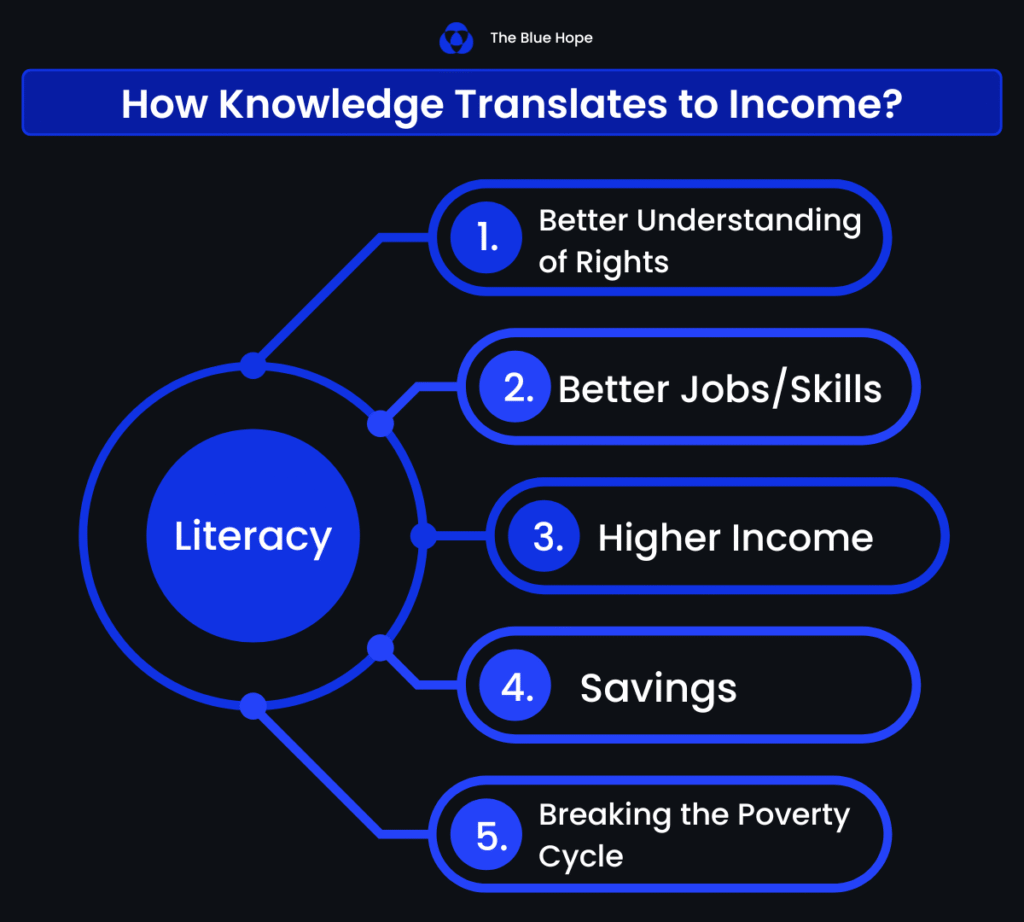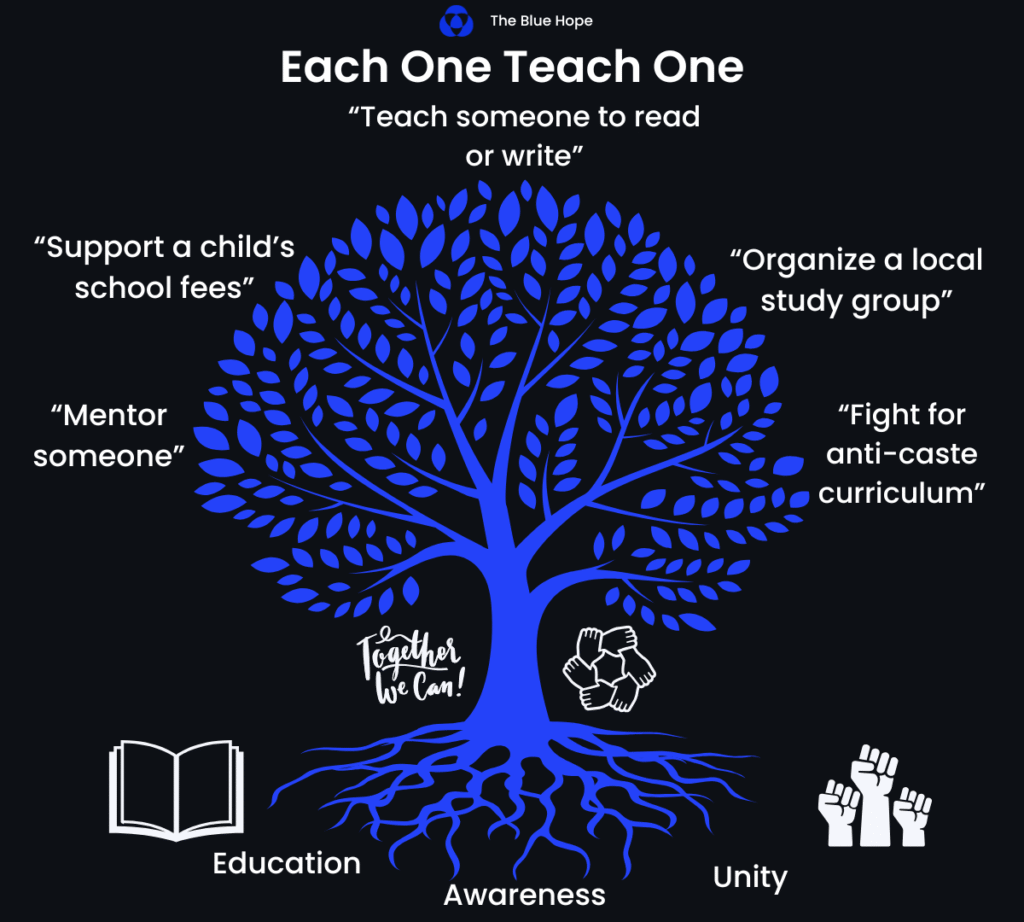Why do some families struggle with poverty for generations while others escape it? For Bahujans, education has not just been about learning—it has been the key to unlocking a future of dignity, opportunity, and financial independence. Historically, caste discrimination has limited Bahujan access to education, trapping many in low-paying, unstable jobs. Yet education remains the most effective way to break this cycle and create lasting change.
The journey toward educational equality for Bahujans has been long and challenging. From being systematically excluded from learning spaces to facing discrimination within modern classrooms, Bahujans have had to overcome numerous barriers. Despite these challenges, education continues to offer the most promising path to economic mobility and social empowerment.
In this article, we’ll explore how historical exclusion from education has perpetuated generational poverty among Bahujans, how access to knowledge opens doors to economic and social mobility, and what challenges still exist in ensuring quality education for all. We’ll also discuss practical solutions that can help more Bahujans access quality education and use it as a tool for breaking the cycle of poverty.
The Historical Denial of Education to Bahujans
The caste system in India has historically been a major barrier to education for Bahujans. Traditionally, education was restricted to upper castes, with severe punishments for those from marginalized communities who dared to seek knowledge. Schools functioned as spaces that preserved and replicated the caste system, reminding Bahujans of their place in the social hierarchy and reinforcing the notion that they would never be equal to those from dominant castes.
This systematic exclusion wasn’t accidental—it was deliberate and enforced through both social customs and institutional practices. Bahujan children were often made to feel unwelcome in educational spaces, subjected to humiliation, discrimination, and even violence. Teachers would openly use casteist slurs, segregate Bahujan students, and subject them to harsher punishments compared to their upper-caste peers.
The impact of this historical denial of education has been profound and long-lasting. Without access to education, generations of Bahujans were confined to traditional occupations, often involving manual labor with little economic security or opportunity for advancement. This created a cycle of poverty that has been difficult to break.
The struggle for educational rights for Bahujans gained momentum through the efforts of social reformers like Dr. B.R. Ambedkar, Jyotirao Phule, and Savitribai Phule. These leaders recognized education as a powerful tool for liberation and fought tirelessly to make it accessible to marginalized communities. Their vision and activism laid the groundwork for the educational opportunities that exist for Bahujans today.

Education as a Path to Financial Empowerment
Education is often described as the great equalizer, and for good reason. It provides individuals with the knowledge, skills, and credentials needed to access better economic opportunities and improve their financial situation4. For Bahujans, who have historically been excluded from economic prosperity, education offers a pathway to financial independence and stability.
The connection between education and economic empowerment is clear. With education, individuals can:
- Access better-paying jobs and career opportunities
- Develop critical thinking and problem-solving skills
- Make informed financial decisions
- Build networks and social capital
- Break free from traditional occupations that may offer limited economic security
According to the World Bank, over 700 million people still live in extreme poverty, surviving on less than $1.90 a day4. Education has proven to be one of the most effective tools for lifting people out of this level of poverty. By acquiring knowledge and skills, individuals gain the confidence and ability to pursue their goals and aspirations, empowering them to navigate challenges in their personal and professional lives.
For Bahujans specifically, education can disrupt the intergenerational transmission of poverty. When parents are educated, they are more likely to value education for their children, creating a positive cycle that can transform families and communities. Education also equips individuals with the tools to challenge discriminatory practices and advocate for their rights, further contributing to economic and social empowerment.

Current Challenges in Accessing Quality Education
Despite progress in expanding educational opportunities, Bahujans continue to face significant challenges in accessing quality education. These barriers exist at multiple levels, from individual and family circumstances to institutional and systemic issues.
Economic Barriers
Poverty remains a major obstacle to education for many Bahujan families. The costs associated with schooling—including fees, books, uniforms, and transportation—can be prohibitive for families struggling to meet basic needs. Additionally, there is an opportunity cost to education, as children who attend school cannot contribute to family income through work.
Financial insecurity can force Bahujan students to drop out of school prematurely, limiting their educational attainment and future economic prospects. This creates a vicious cycle where poverty leads to limited education, which in turn perpetuates poverty.
Discrimination in Educational Spaces
Even when Bahujans gain access to educational institutions, they often face discrimination that impacts their learning experience and outcomes. This discrimination takes various forms, including:
- Teachers asking Dalit children to sit separately from other students
- Making insulting remarks about students from marginalized communities
- Using derogatory terms related to caste, community, or religion
- Excluding Bahujan students from leadership roles
- Forcing them to perform unpleasant tasks like cleaning toilets.
These experiences can be traumatic for Bahujan students, affecting their self-esteem, academic performance, and willingness to continue their education. Many Bahujan children end up hating school and studies, which severely impacts their educational outcomes and prevents them from achieving their true potential.
Systemic Issues
At a systemic level, there are additional challenges that limit educational opportunities for Bahujans:
- Schools in marginalized neighborhoods often have poor infrastructure and less qualified teachers.
- There is a lack of representation of Bahujans in faculty and leadership positions in educational institutions.
- The curriculum often glorifies Brahminical history and culture while erasing the contributions and struggles of Dalit Bahujan Adivasi communities.
- Support systems for Bahujan students are inadequate, leaving them without the mentorship and guidance needed to navigate educational institutions.
These systemic issues create an educational environment that is not conducive to the success of Bahujan students, making it difficult for them to use education as a tool for breaking the cycle of poverty.
The Impact of Educational Barriers on Economic Mobility
The barriers to education faced by Bahujans have direct implications for their economic mobility. Without access to quality education, many Bahujans remain trapped in low-paying, insecure jobs with limited opportunities for advancement.
Discrimination by teachers and fellow students is identified as one of the largest causes of Bahujan dropouts in education, alongside poverty. This high dropout rate limits the educational attainment of Bahujans, which in turn restricts their access to better economic opportunities.
The consciousness of caste superiority runs deep in dominant-caste faculty and students, who find multiple ways to discriminate against Bahujan students and continue the practice of untouchability in new forms. This discrimination creates a hostile learning environment that can push Bahujan students to depression, self-hate, and self-doubt, further impeding their educational and economic progress.

Strategies for Breaking the Cycle Through Education
Despite these challenges, education remains a powerful tool for breaking the cycle of poverty among Bahujans. Here are some strategies that can help Bahujans leverage education for economic empowerment:
1. Invest in Early Childhood Education
Early childhood education is particularly beneficial for children from economically disadvantaged backgrounds. Schools providing quality early childhood care and education reap the greatest dividends for children who come from families that are economically disadvantaged. Ensuring that Bahujan children have access to early education can give them a strong foundation for future learning and success.
2. Address Financial Barriers
To make education more accessible to Bahujans, it’s essential to address the financial barriers they face. This can be done through:
- Providing scholarships, grants, and subsidized loans to alleviate the financial burden on students and their families.
- Offering need-based scholarships and emergency funds for unexpected expenses.
- Implementing fee waivers and financial assistance programs for talented and deserving students from disadvantaged backgrounds.
3. Create Supportive Learning Environments
For Bahujan students to thrive in educational settings, they need supportive learning environments that acknowledge and respect their identities and experiences. This includes:
- Training teachers to be sensitive to the needs and challenges of students from marginalized communities
- Implementing inclusive teaching practices that accommodate diverse learning needs and backgrounds.
- Creating safe spaces where Bahujan students can share their experiences and find support.
4. Strengthen Support Systems
Support from faculty members and senior students can be crucial for Bahujan students navigating academic life and university spaces for the first time. Mentorship programs where educated Bahujans guide and inspire the next generation can provide much-needed support and role models for younger students.
5. Advocate for Policy Changes
Systemic change is necessary to address the deep-rooted issues of discrimination and exclusion in education. This requires advocating for policy changes that:
- Ensure more inclusive and anti-discriminatory educational environments
- Strengthen the implementation of reservation policies in academic institutions
- Increase representation of Bahujans in faculty and leadership positions
- Reform curricula to include the contributions and perspectives of Dalit Bahujan Adivasi communities
6. Promote Financial Security Through Education
Financial security can significantly ease a Bahujan student’s life and enable them to focus on their studies without the pressure of supporting themselves or their families. Ensuring that Bahujan students have access to financial resources—such as research fellowships, stipends, and part-time employment opportunities—can help them complete their education and use it as a stepping stone to economic stability.

Success Stories and Role Models
Despite the challenges, many Bahujans have successfully used education to break the cycle of poverty and achieve economic mobility. These success stories serve as powerful examples of what is possible when barriers to education are overcome.
There are numerous instances of Bahujan research scholars who have used their research fellowships not only to further their own education but also to support their siblings’ higher education, build houses for their families, pay for their parents’ medical expenses, and contribute to community organizations. These individuals demonstrate how education can be a tool for not just individual advancement but also collective progress.
By highlighting these success stories and creating more opportunities for Bahujans to access quality education, we can work toward a future where education truly serves as a pathway out of poverty for all.

Conclusion: Education as a Tool for Collective Progress
Education is more than just a personal achievement—it is a collective tool for dismantling systemic poverty among Bahujans. While significant progress has been made in expanding educational opportunities for marginalized communities, there is still a long way to go in addressing the barriers that prevent many Bahujans from accessing quality education and using it as a pathway to economic mobility.
By investing in early childhood education, addressing financial barriers, creating supportive learning environments, strengthening support systems, advocating for policy changes, and promoting financial security through education, we can work toward a future where education truly serves as a tool for breaking the cycle of poverty among Bahujans.
Every educated Bahujan contributes to the progress of the entire community, challenging stereotypes, creating new possibilities, and paving the way for future generations. Through education, Bahujans can not only improve their own economic circumstances but also contribute to the broader struggle for equality and justice.

The path forward may not be easy, but with determination, solidarity, and a commitment to educational equity, Bahujans can harness the power of education to break the cycle of poverty and create a more just and equitable society for all.


